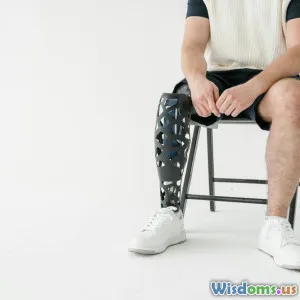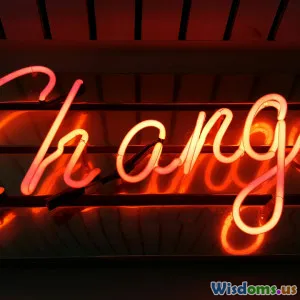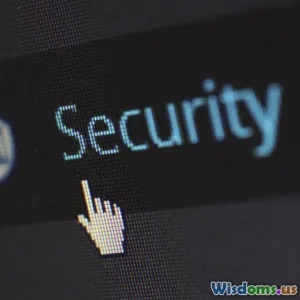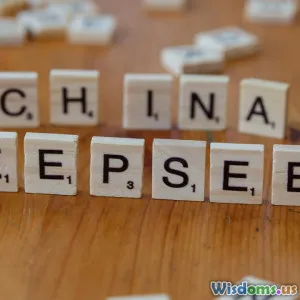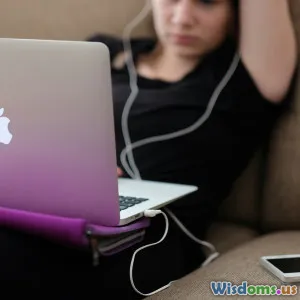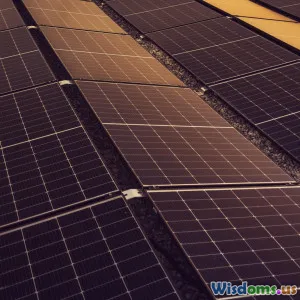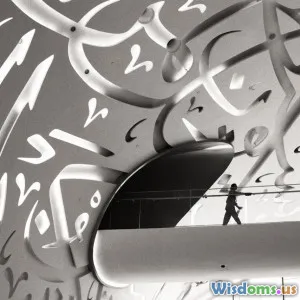
Navigating Art and Innovation
7 min read Explore how art and innovation intersect, shaping culture through technology and creativity in today's world. (0 Reviews)
Navigating Art and Innovation: The Fusion That Shapes Culture and Society
Introduction: The Confluence of Creativity and Progress
In our rapidly evolving world, the boundary between art and innovation becomes increasingly blurred. From traditional brushstrokes to AI-generated masterpieces, creativity and technology converge, reshaping cultural landscapes in unprecedented ways. This fusion sparks curiosity and challenges how societies define culture, identity, and expression.
Art and innovation together reflect humanity's enduring quest to explore, communicate, and push limits. Whether through interactive installations, virtual reality experiences, or novel artistic tools, these forces open new windows into human experience—inviting us to rethink both art and progress.
Understanding the Relationship Between Art and Innovation
Art as a Catalyst for Innovation
Throughout history, art has stimulated technological advances by inspiring innovative methods and tools. The Renaissance period exemplifies this: Leonardo da Vinci’s artistic mastery included designing machines and anatomical studies, blending science with creativity.
Today, artists continue to challenge conventions through material experimentation and cross-disciplinary collaborations, pushing the envelope of what is achievable. For example, artist Olafur Eliasson employs sensors and artificial light to create immersive environmental art installations, prompting viewers to interact physically and intellectually.
Innovation Driving New Artistic Expressions
Conversely, innovations generate novel platforms and mediums for artists. The advent of digital technology has democratized art creation and distribution more than ever before. Digital painting tablets, 3D modeling software, and AI-driven art generators empower new forms of artistic expression and reach.
The emergence of NFT (Non-Fungible Token) art exemplifies this shift — where blockchain technology allows artists to sell and authenticate digital artwork directly to collectors globally. Beeple, a digital artist, made history in 2021 by selling an NFT art piece for $69 million at a major auction house, illustrating how innovation transforms art’s economic and social premises.
Case Studies: Iconic Intersections of Art and Tech
The Role of AI in Contemporary Art
Artificial intelligence is not only a practical tool but also a collaborator in creating art. For instance, artist Refik Anadol uses AI-driven algorithms to analyze vast datasets, transforming data into mesmerizing visual installations. His work "Machine Hallucinations" reimagines architectural heritage through machine learning, blending human creativity with computational might.
Another example is the story of "Edmond de Belamy," an AI-generated portrait created by Paris-based collective Obvious. It sold at Christie’s auction in 2018 for nearly half a million dollars, provoking discussion about authorship and originality in the digital age.
Immersive Technologies and Cultural Engagement
Virtual reality (VR) and augmented reality (AR) technologies redefine audience interaction with art and heritage. The British Museum’s VR experience lets visitors 'walk through' a Neolithic settlement, bridging time and place with interactive storytelling.
Pioneering projects such as TeamLab Borderless in Tokyo combine digital art with spatial design to create immersive environments that dissolve traditional exhibition boundaries.
These technologies also increase accessibility. Remote audiences gain rich, participatory experiences regardless of geographical limitations—a critical advancement in the global cultural exchange.
Challenges and Ethical Considerations
While the fusion of art and innovation offers exciting possibilities, it also raises important ethical questions.
Authorship and Authenticity
As AI and algorithms contribute to artistic creation, the boundaries of human authorship become blurred. Who owns a piece generated partially or fully by a machine? The debate extends to the valuation of such art and its place within traditional art markets.
Cultural Representation and Technology
Innovations must be sensitive to cultural identity and context. Tech-driven art projects need to avoid homogenizing diverse cultural narratives or perpetuating biases inherent in datasets or algorithms.
Additionally, there's concern over digital divide issues—where access to innovative technology may be limited to privileged groups, causing disparities in artistic participation and cultural representation.
The Future: Cultivating a Symbiotic Relationship
Education and Collaborative Platforms
To harness the full potential of art and innovation, education systems must integrate arts and STEM (science, technology, engineering, and mathematics) fields. STEAM initiatives (adding Art to STEM) foster critical and creative thinking, nurturing the next generation of innovators.
Collaborative platforms and residencies where artists and technologists work side-by-side lead to groundbreaking projects that neither domain could achieve alone.
Sustainability and Social Impact
Innovative art can also directly address social and environmental challenges. For example, installations powered by renewable energy or projects raising awareness about climate change use technology artistically to inspire action.
Artists like Michael Najjar incorporate space exploration themes highlighting humanity's future, blending visionary art with scientific insight to stimulate public discourse.
Conclusion: Embracing the Interplay of Art and Innovation
Navigating the evolving landscape where art meets innovation requires an open mind and collaborative spirit. Both fields enhance each other, driving cultural evolution that reflects and influences societal values.
The fusion unlocks unlimited creative potential—from immersive experiences to ethical dialogue—that shapes how we understand ourselves and our place in the world.
As creators, consumers, and cultural custodians, embracing this interplay offers opportunities to redefine expression, challenge norms, and advance human creativity toward a more inclusive and inspired future.
Explore the emerging horizons where arts and innovation inspire transformation, cultural richness, and social progress, inviting us all to participate in this extraordinary journey.
Rate the Post
User Reviews
Popular Posts











